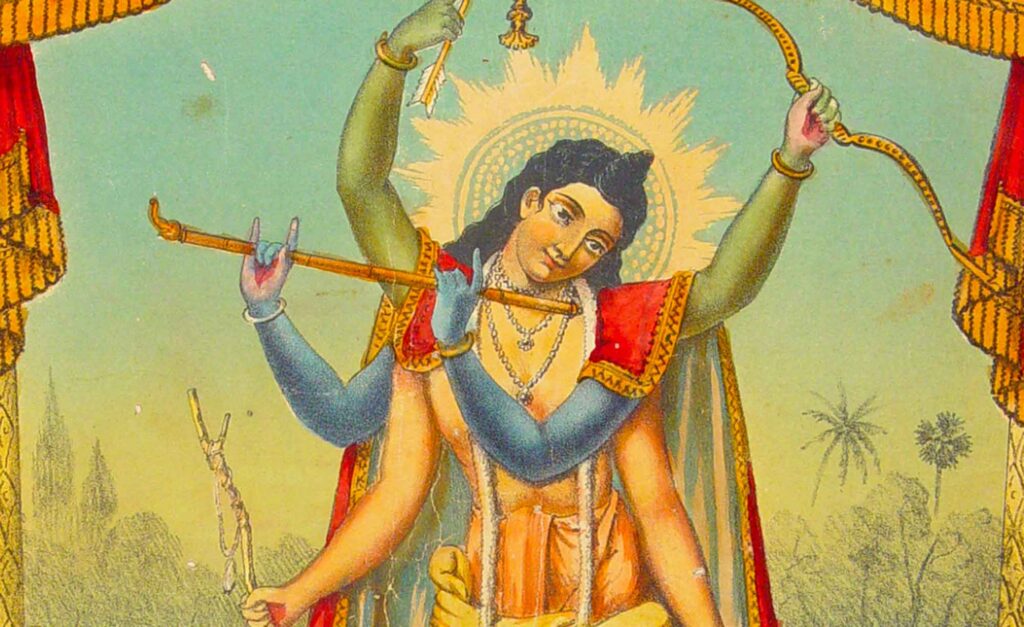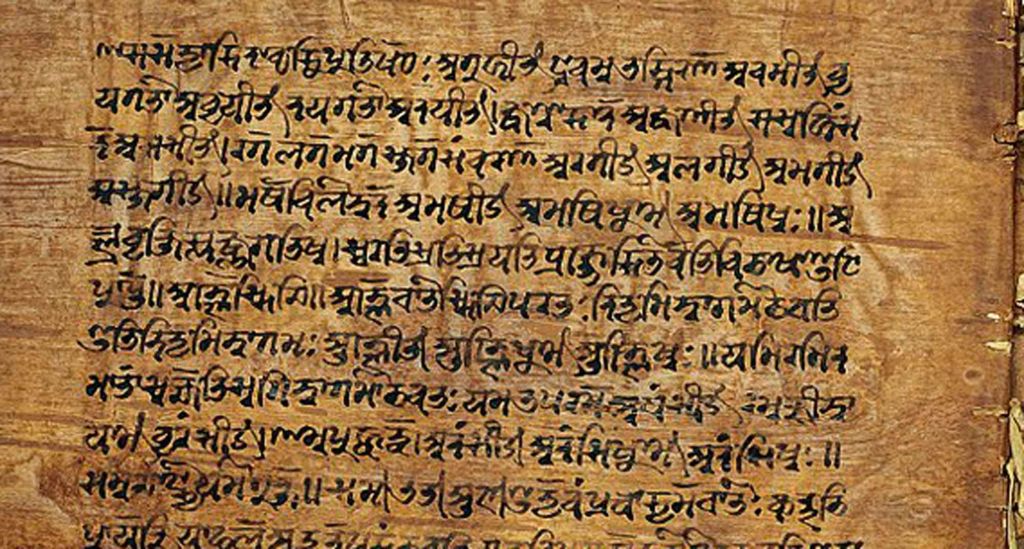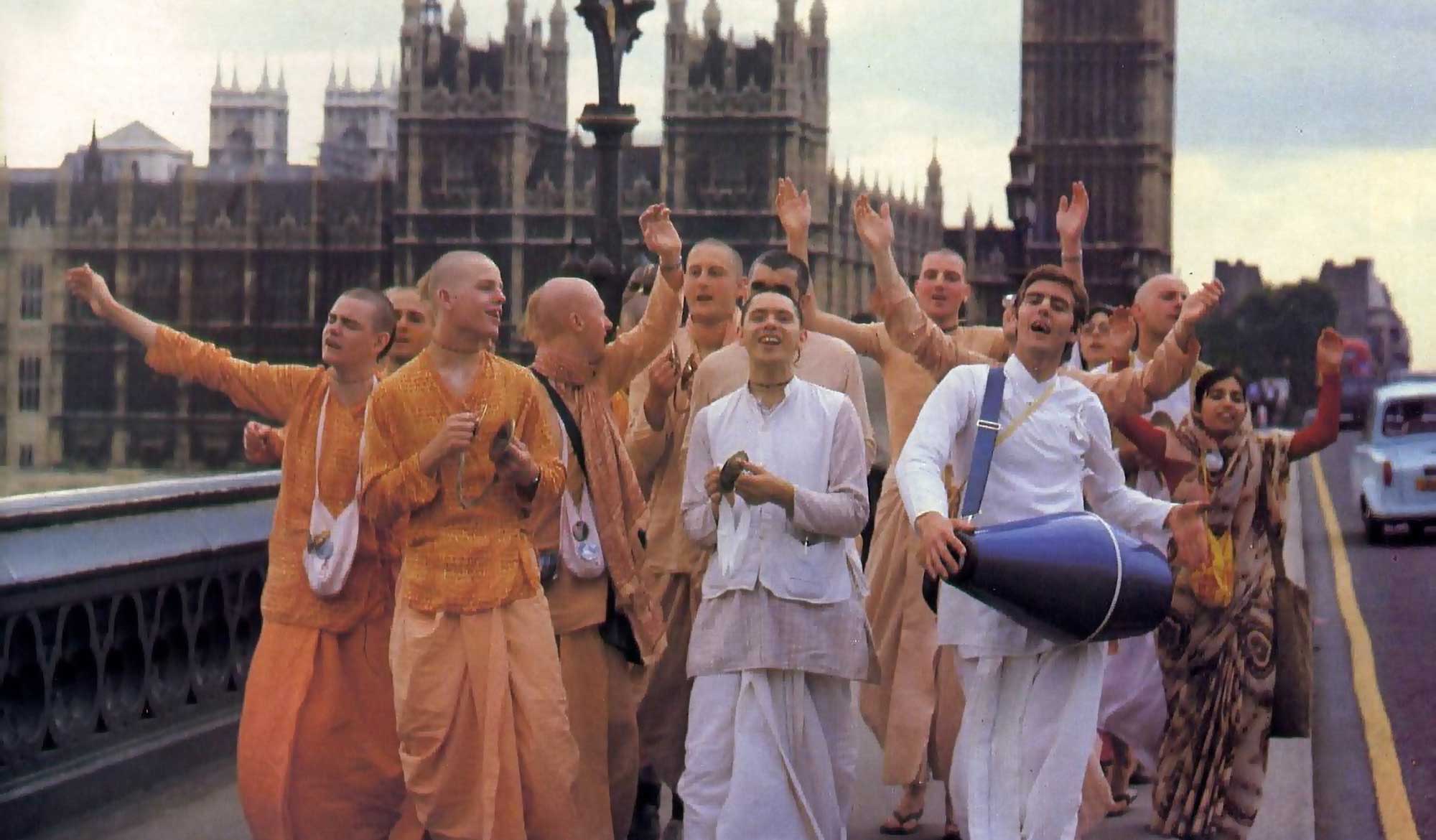Overview
Śrī Śrī Hari Dāsa Ṭhākurera Pāṭa – Kulīnagrāma (Śrī Śrī Hari Dāsa Ṭhākura's Place in Kulīnagrāma) was first published in Sajjana Toṣaṇī Vol.3 issue 1 in 1886. Bhaktivinoda Ṭhākura recounts his visit to the place of bhajana of Śrī Hari Dāsa Ṭhākura in Kulīnagrāma and its state of disrepair. He then asks generous donors to come forward to renovate this holy place.
(translated by Swami B.V. Giri)
During the last Sarasvatī Pūjā I went to take darśana of Kulīnagrama. Kulīnagrama is an old and famous town within Bengal. There is a way to reach this village from Memory Station or Boichi Station; however the best path is no less than three krośas (approx. 5.5 miles). We first visited the Śrī Śrī Rādhā-Govinda-Jiu temple established by Śrī Śrī Śyāma Dāsa Ācārya in the village of Rāṇāpāḍā on the outskirts of the village. From what is written on the temple, it is understood that this temple was built in 1814 Śakābda (1892 CE). From there we went to see the remains of the residence of the magnanimous Śrī Śrī Mālādhara Vasu who went by the title Guṇarāja Khāṇ Mahāśaya. That fort has four boundary walls around it. After seeing that, we had darśana of the house of one of our esteemed readers who is a great Vaiṣṇava which is the place where Śrī Śrī Hari Dāsa Ṭhākura would take food. Later, we took darśana of all the Deities installed by Śrī Śrī Satyarāja Khāṅ and finally the Deity of Śrī Gopāla established by Śrī Śrī Rāmānanda Vasu. Not far from Gopāla is a Śiva temple. There is a bull in that temple, with the following śloka written on its neck:
śāke viśati vedekhe-maṇau hi śiva-sannidhau
khāṅ-śrī-satyarājena sthāpito’yaṁ mayā vṛṣaḥ
It seems that Śrī Śrī Guṇarāja Khāṅ installed this Śiva, and his son Satyarāja Khāṅ Mahāśaya installed the bull three years before the birth of Śrī Śrī Mahāprabhu. Mālādhara Vasu received the title of Guṇarāja Khāṅ, and his descendants were the main inhabitants of Kulīnagrāma. Although some of his descendants are still present, none amongst them seem to be real Vaiṣṇavas. We feel deeply saddened upon seeing this sad state due to this catastrophe.
Before it became evening, we reached the place of bhajana of Śrī Śrī Hari Dāsa Ṭhākura. After spending the night in that beautiful place, we came back to the Memory Station in the morning. Śrī Śrī Hari Dāsa Ṭhākura’s place of bhajana is extremely charming. From there the temple of Śrī Śrī Gopāladeva is about half a mile. There are no residences nearby. There is a Deity of Śrī Śrī Mahāprabhu there. There are plenty of gardens at the place. There is a long lake and the water there is good. The premises are spacious. There are many houses there. The mahānta-mahārāja (main priest) is the epitome of peacefulness. He is endeavouring to perform the sevā of Mahāprabhu. There are one or two sādhus who reside there. There is nothing wrong with taking care of them. Sadly, the porch of the temple of the Mahāprabhu is almost dilapidated. The kitchen has completely collapsed. The storeroom is also under construction. The bhajana-maṇḍapa of Hari Dāsa Ṭhākura is broken in many places. Alas! We cannot understand why the rich gentlemen of this province do not take care to rebuild these places. The glories of establishing a temple to Bhagavān are declared in all the śāstra, so it is difficult to write about how much spiritual sukṛti one acquires by establishing or renovating a siddhāśrama (an āśrama originally established by a perfected devotee). Especially the place of Śrī Śrī Hari Dāsa Ṭhākura is revered all over the country. This place will eventually fall into a poor state – can any kind-hearted Vaiṣṇava bear to see this?
The residents of Vaidyāpura, Śrīyuta Bābu Dīna-bandhu Nandī, Śrīyuta Bābu Cāṅda-Govinda Nandī and Śrīyuta Bābu Kṛṣṇa-mohana Nandī, the residents of Devīpura Śrīyuta Bābu Rāja-Kṛṣṇa Siṅgh and Śrīyuta Bābu Caṇḍī-caraṇa Siṅgha, the residents of Āmādapura Śrīyuta Bābu Maheśa-candra Caudhurī and Giriśa-candra Caudhurī, the residents of Cakdīghi, Śrīyuta Bābu Lalita-mohana Siṅgha Rāya and Śrīyuta Bābu Chikkana-lāla Siṅgha Rāya, the resident of Vasugrāma Śrīyuta Bābu Mohinī-mohana Siṅgha and the resident of Bāhāpura, Śrīyuta Bābu Kṛṣṇa-lāla Ghoṣa, the resident of Śrīkṛṣṇapura Śrīyuta Bābu Dvārakānātha Mitra and the resident of Itle, Śrīyuta Gopāla Bābu etc. – all these famous crest-jewels amongst Hindu gentlemen have attained various kinds of prestige in this province. If all these mahātmās give a slight glance towards this noble deed, it will be completed effortlessly. A thousand coins will suffice for the renovation work of this place. We hope that during the rainy season, the aforementioned mahātmās will, by and large, give a thousand coins. If these mahātmās, with a simple heart, offer a thousand coins as a sign of their generosity, the renovation will be completed by next winter. If the mahātmās wish to give their own money, they can send it to the honourable treasurer of the Viśva-Vaiṣṇava Sabhā. The renovation work will be done by the Sabhā. The implication of our proposal is that the esteemed donors should not act on their own, and I feel that the mahānta-mahārāja would also not want to accept so much trouble.
If the esteemed donors wish to carry out the work of the Viśva-Vaiṣṇava Sabhā, then they can send money to the Treasurer in the name of Śrīyuta Bābu Lāla-mohana Datta Mahāśaya. The address of the Sabhā is Number 66 Sarakara Lane, Chorbagan, Calcutta. All the money received from the honourable donors will be acknowledged and a clear account will be published in this magazine.













